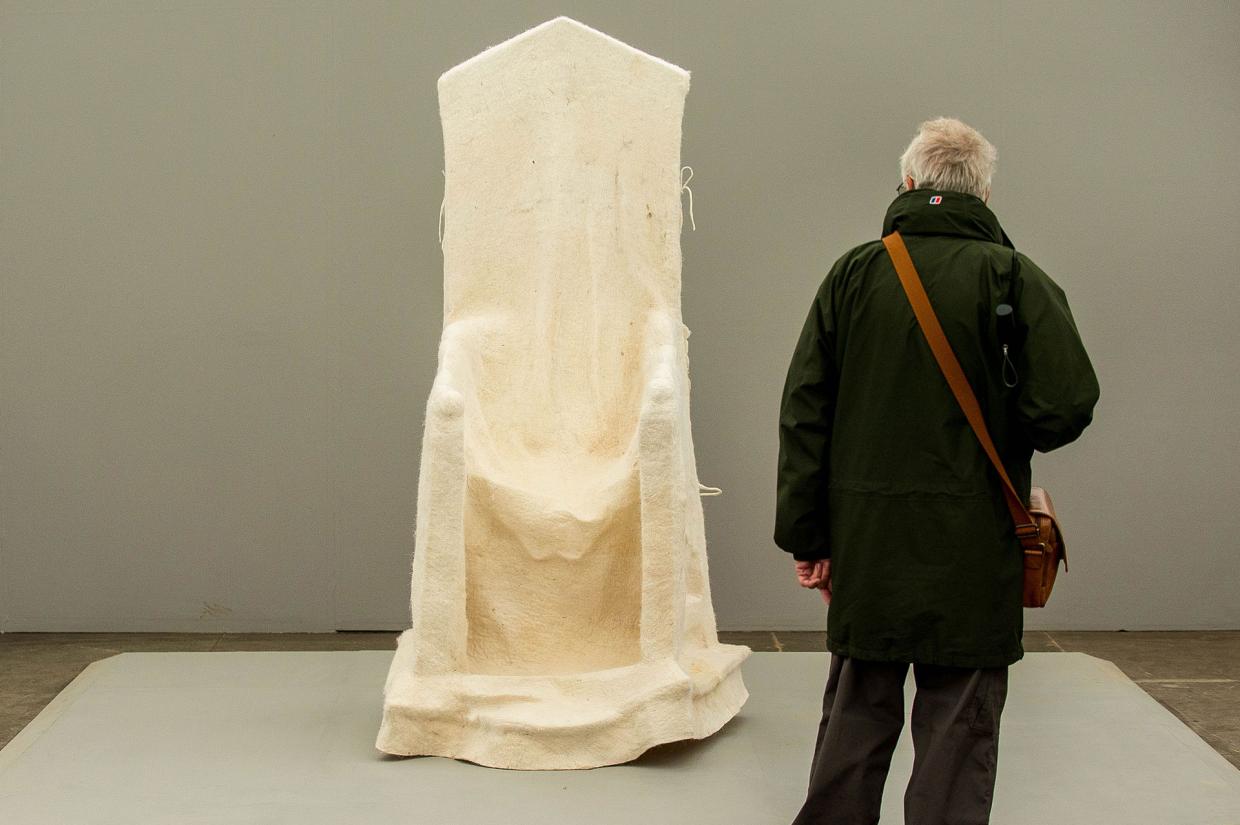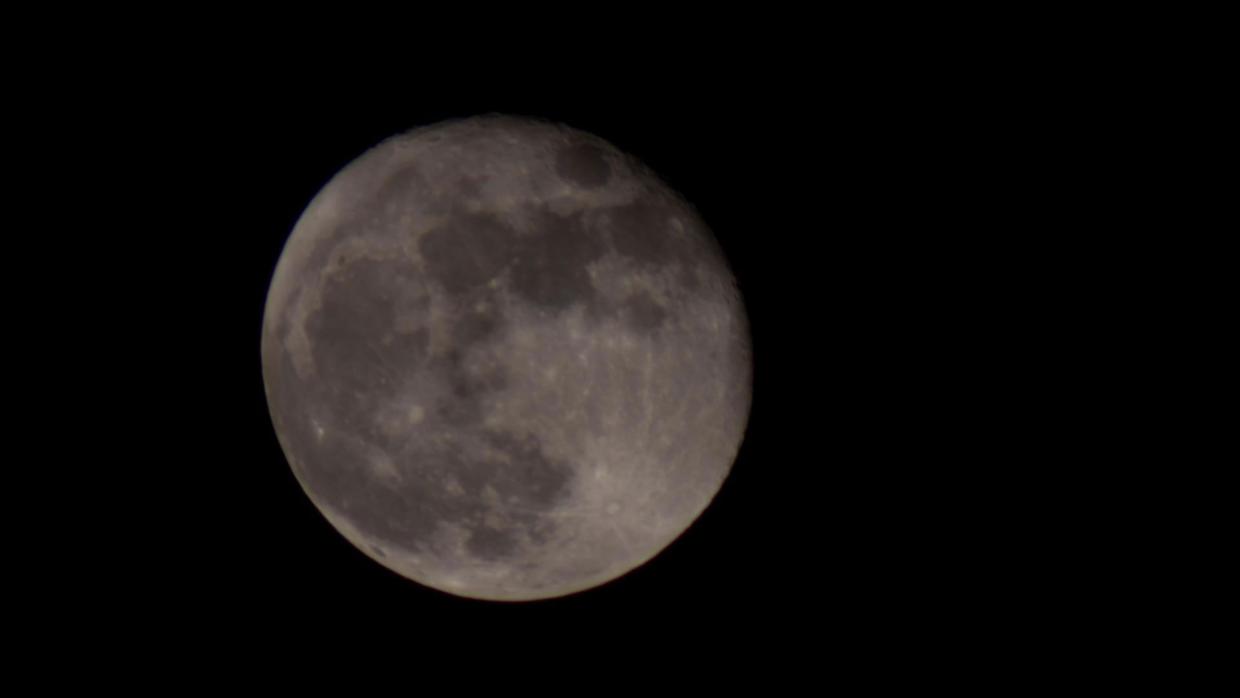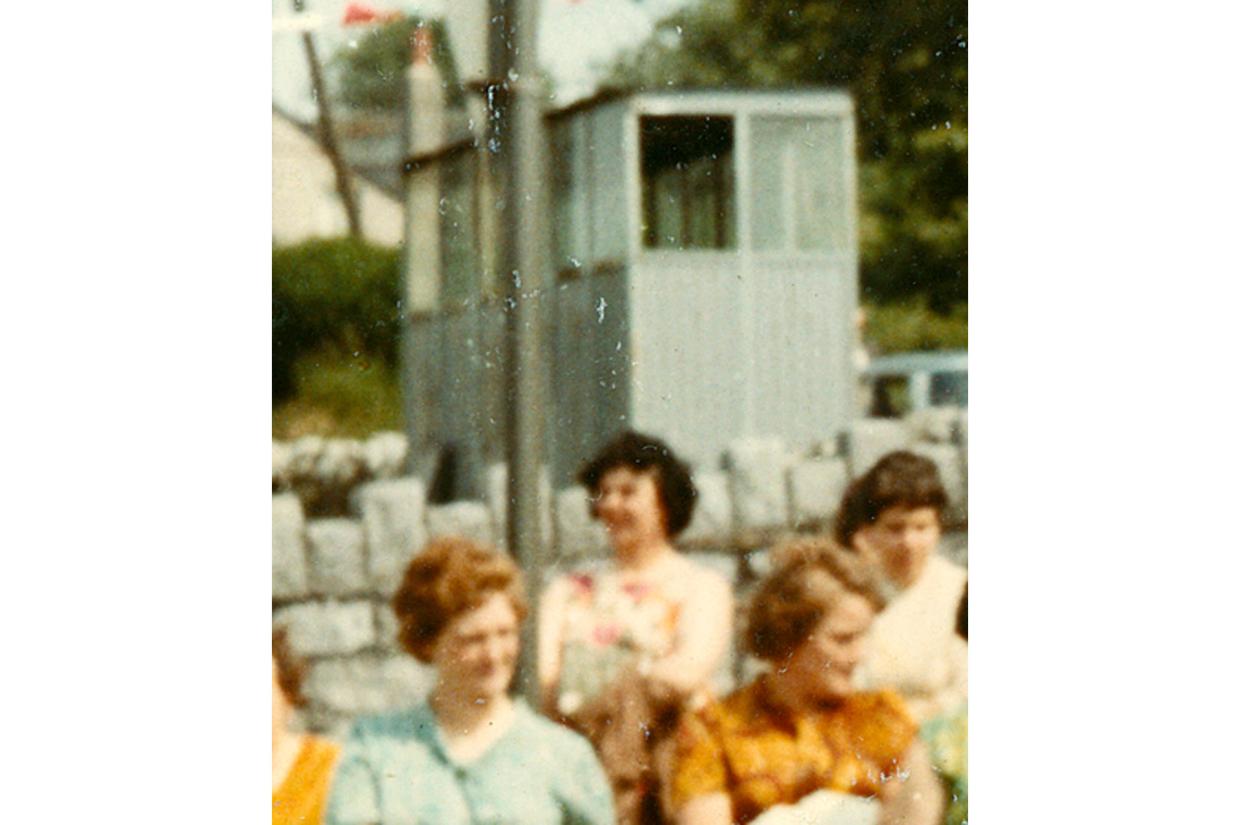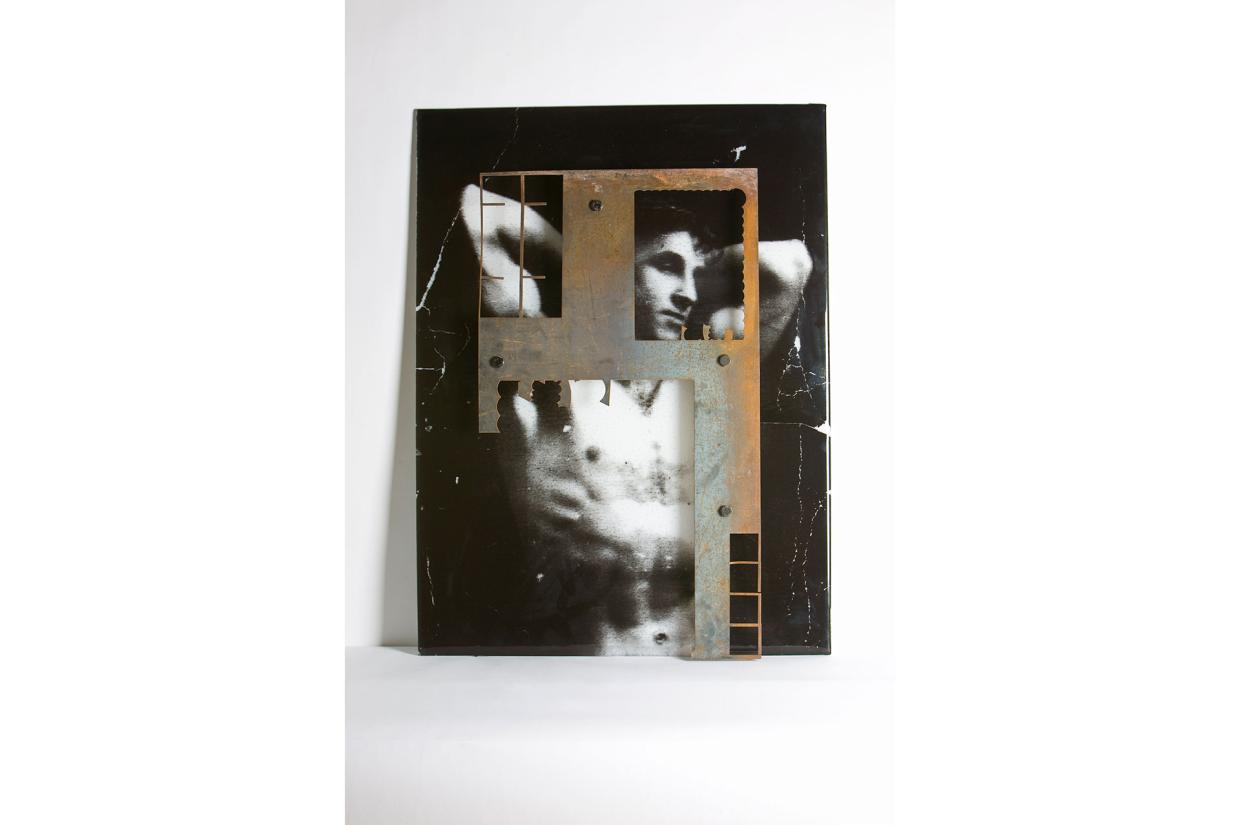He decided to share the award between four artists. Every year the artist gives £600 to work in Y Lle Celf’s Open Exhibition that conveys the spirit of activism in the struggle for language, culture and politics in Wales. And this year it was decided that Peter Davies, Peter Finnemore, Pete Telfer and Christine Mills merited the prize
“It was a difficult choice,” said Ivor Davies, “and eventually I decided that four artists deserved the award for different reasons, as if each one was worthy of the £600. Though, the money isn’t important but the fact that they all have a unique energy and strength and stand out on their own. Each one is a worthy winner.”
Possibly ‘Y Gorchudd Llwch (The Dust Cover) by Christine Mills and Gwers 56 – 59 (Lesson 56 – 59) by Peter Finnemore were by far the obvious contenders.
As this year marks the centenary of ‘Eisteddfod y Gadair Ddu’ (the Eisteddfod of the Black Chair) the death of Hedd Wyn (Ellis Humphrey Ellis) has become a symbol of the loss of a generation of young Welshmen in the First World War. At the National Eisteddfod held at Birkenhead in 1917 it was announced that the winner of the Chair had been killed in action and the empty chair was then draped in a black sheet.
Bearing this in mind Christine Mills collected wool from Trawsfynydd and having washed it with water from Yr Ysgwrn’, the poet’s home nearby, she moulded it in the form of the Chair. It is as if the felt cover is calling for peace.
Then, the long video presentation of photographs taken by Peter Finnemore recall past and fairly recent attitudes to Wales and its people. The images of posters, pages from history text books, newspaper cuttings, postage stamps and other printed matter allude to the contempt, disdain or discourtesy shown towards a minority.
Ivor Davies’ attention was also drawn to Peter Davies’ ‘Survival’ and Pete Telfer’s ‘4 Lleuad’ (4 Moons). Both are members of Beca – the artist group intent with bringing a new national consciousness to art in Wales.
The portrait of a young man’s torso printed on glass on which a metal plate is bolted may not be an obvious choice. Though ‘Survival’ deals with the repression of sexuality and not simply, with Wales or the Welsh language, he said, Peter Davies deserves due credit. “His work rarely appears in the Eisteddfod,” said Ivor Davies, “but to me it symbolises many years’ work in establishing the most important and committed movement in Welsh art, and perhaps in British art, of the second half of the twentieth century. (Beca was formed by Peter Davies and his brother, the late Paul Davies, in the 1970s).
As with his fellow Beca member rarely is Pete Telfer’s work seen at the Eisteddfod these days either. His contemplative video shows the phases of the moon as it moves across the firmament. “Since the 1980s he has devoted his time to filming and recording the work of artists in Wales,” said Ivor Davies. “And by now he has the greatest and most important archive of a very significant and formative period in our art. Pete Telfer is one of the most important, yet often unseen figures in Welsh visual art. How else can he be honoured and encouraged in mid-career? Pete Telfer’s work shows that Welsh art achieves the highest international excellence not by imitating American or other movements but by being itself and drawing on experiences to all.”
When Ivor Davies won the Gold Medal for Fine Art in the Pembrokeshire 2002 National Eisteddfod he decided to put the prize money to use by establising his own award. Thoung the original monetary award has long since run out, he continues to fund the Ivor Davies Award. By now the announcement of the winner is one of the highlights of Y Lle Celf’s activities.
“I established the award to recycle the money that I won in the spirit of teh works that I exhibited that year.
This was a way of achieving and promoting one of my aims for the language, culture and politics of Wales in the context of the visual arts.
It is important for us to remember, or not to forget, that these things are alive now – furthering the possibilities of maintaining our natonal conciousness, language and culture alive is in our hands.”




